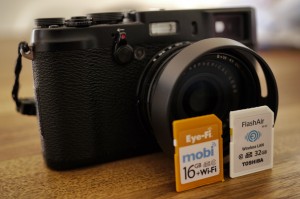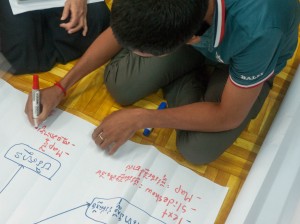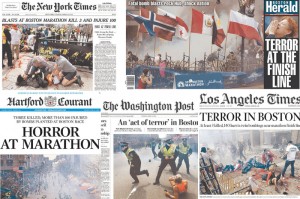Search Results for Tag: photography
How to plan your multimedia story
An online multimedia story is a combination of video, text, photos, audio, graphics and interactive elements where each aspect complements the others. It allows a reporter to draw on the strength of each medium to tell a more compelling story.
But making a multimedia story really shine requires forethought and planning. Even before going out to report, journalists need to think about how they’re going to approach the story, when they’re going to use video, text, sound or photos, and then tie everything together to create a cohesive package. onMedia’s Kyle James has tips on doing the prep work to make sure your multimedia story is a success.
![]() read more
read more
Upgrade your camera with a WiFi memory card
 My smartphone has a fantastic camera and it’s a like a digital notebook for documenting events and sharing content, especially photos. But when I want to produce a better quality image, say a portrait of an interview partner, or when I want to work in low light conditions, then I’ll reach for my digital stills camera.
My smartphone has a fantastic camera and it’s a like a digital notebook for documenting events and sharing content, especially photos. But when I want to produce a better quality image, say a portrait of an interview partner, or when I want to work in low light conditions, then I’ll reach for my digital stills camera.
The question is: how do I make my SLR camera as “mobile” as my smartphone so I can transfer images quickly from the camera to another device and share them on the web?
Yes, I can use a USB cable to connect my camera to either my laptop or my iPad or take out the SD card and plug it directly into the computer. But another way is to use a WiFi enabled SD memory card and there are some interesting advantages of using these cards for covering events.
WiFi enabled SD cards have been around for a while now. The WiFi chip inside the card creates its own wireless network, which allows you to connect your camera via the SD card to another device.
In this post I’m going to refer to two Class 10 WiFi SD cards: the Eye-Fi mobi and the Toshiba FlashAir.
![]() read more
read more
Bloodshed in the news – dealing with graphic images
Every natural disaster, shooting, terror attack or war nowadays triggers a flood of horrifying and violent images. Gone are the days when only press photographers captured grief and terror with their lenses. In the digital age, bystanders can also snap shots of severed limbs and burnt corpses with their phones and cameras and upload them directly online.
How should media organizations handle such graphic images? When is it justifiable to publish photographs of the injured, the dying and the dead? Is it sensationalism to splash the bloodied body of Libya’s dead dictator Muammar Gaddafi across the front page of a newspaper? Is it appropriate to print photos of children killed by bombs in Syria? What about the images of victims, some with shredded limbs, that were published following the Boston marathon bomb blasts?
![]() read more
read more






Feedback